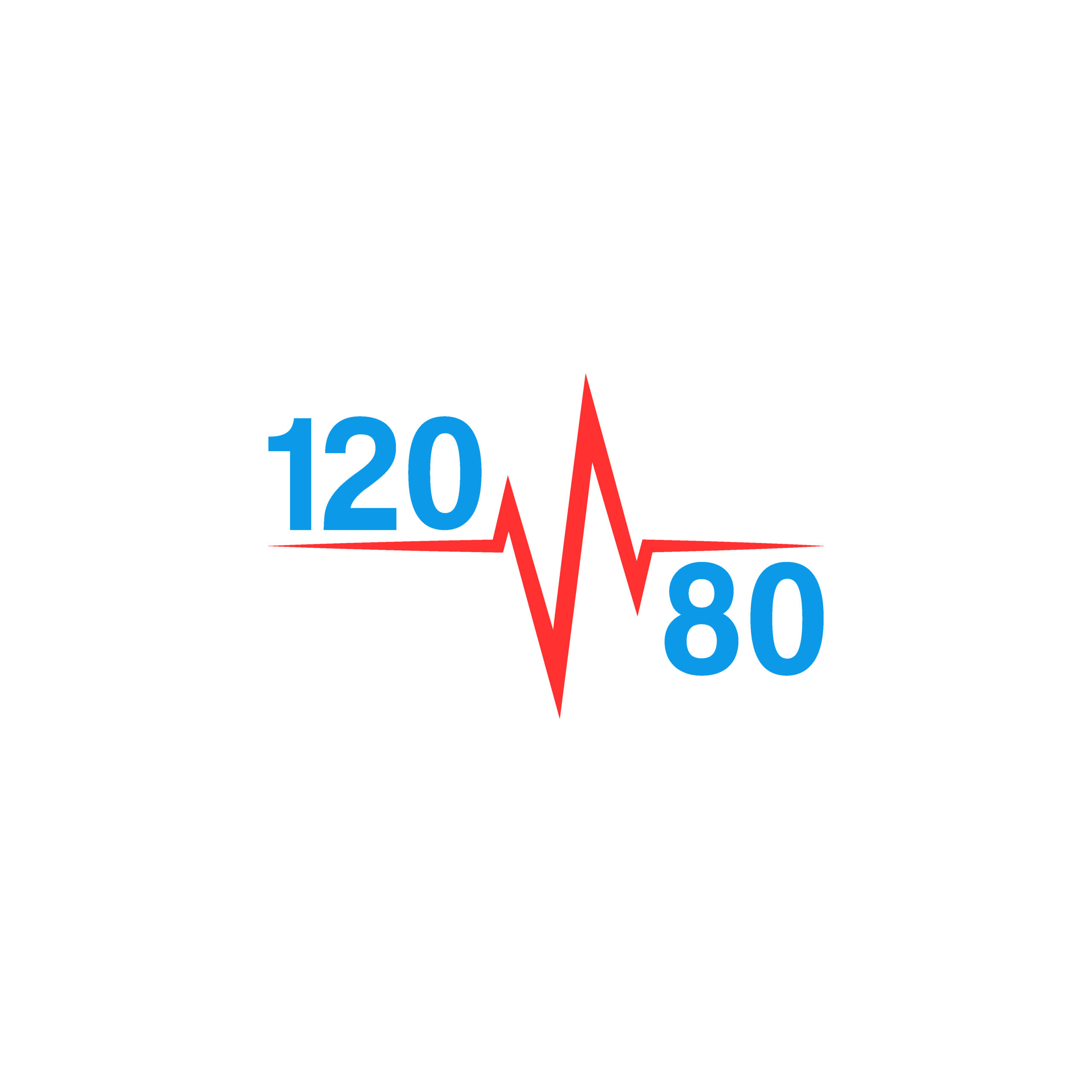Hypertension is another name for high blood pressure. The body needs oxygenated blood from the circulatory system to survive and function properly. When the heat beats, blood is pumped from the heart round the body through the arteries (pipeline taking blood round the body from the heart). Blood pressure is the force with which blood pushes through these arteries. When your blood pressure is high, the heart pumps harder and you are said to have high blood pressure or hypertension.
High blood pressure or hypertension is sometimes said to be the “silent killer” because you may not feel that anything is wrong as it often has no warning signs or symptoms. Persistently elevated blood pressure will gradually cause damage to the blood vessels and internal organs like the heart, kidney, brain, eyes etc. This damage then presents as stroke, kidney failure, heart failure, visual loss, erectile dysfunction vascular dementia and peripheral artery disease (PAD) etc. These are known as complications of hypertension.
Symptoms of Hypertension
Most people with high blood pressure don’t experience any symptoms and don’t even know they have the condition. Sometimes high blood pressure causes:
- headaches
- heart palpitations
- nose bleeds
- blurred vision
- shortness of breath
- chest pain
- dizziness and stomach pain
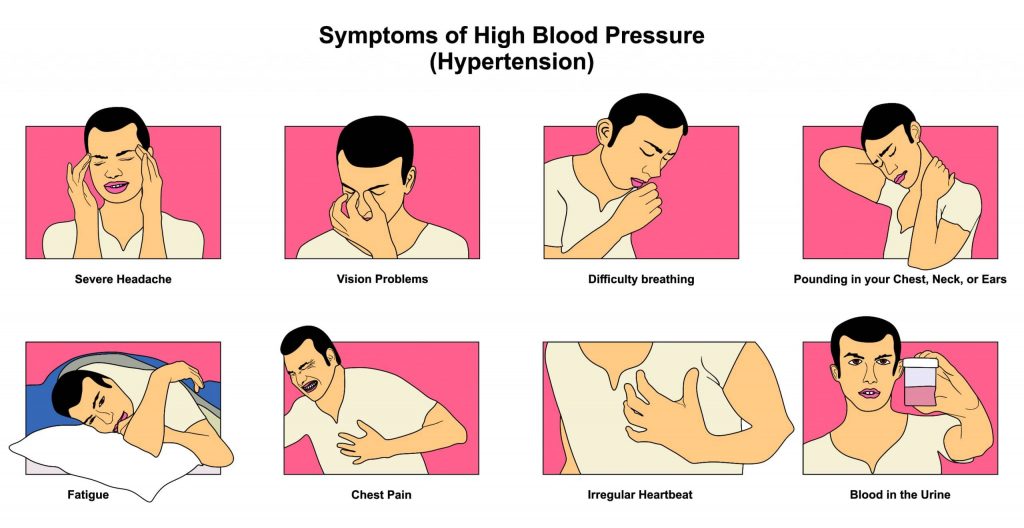
These symptoms generally occur when your blood pressure has increased to a very dangerous or life-threatening level and as a result of complications of high blood pressure. This means the damage has been done as at the time these symptoms present. For example, when you experience blurred vision due to hypertension it usually means hypertensive retinopathy has already set in.
Diagnosis of Hypertension
The only way to find out if you have high blood pressure is to get it measured. To have your blood pressure measured, the healthcare staff wraps the cuff of a device called the sphygmomanometer around your upper arm before it is inflated either manually or electronically. When inflated, the cuff momentarily stops blood flow by compressing the brachial artery.
Air is then slowly released from the cuff while the person measuring the blood pressure listens with a stethoscope or if being measured with an electronic device, the sensor in the cuff works out your blood pressure from pulse and the result read from the monitor of the electronic device. If your heartbeat is not regular, your blood pressure measurement is best taken manually as an electronic device may not take an accurate reading.
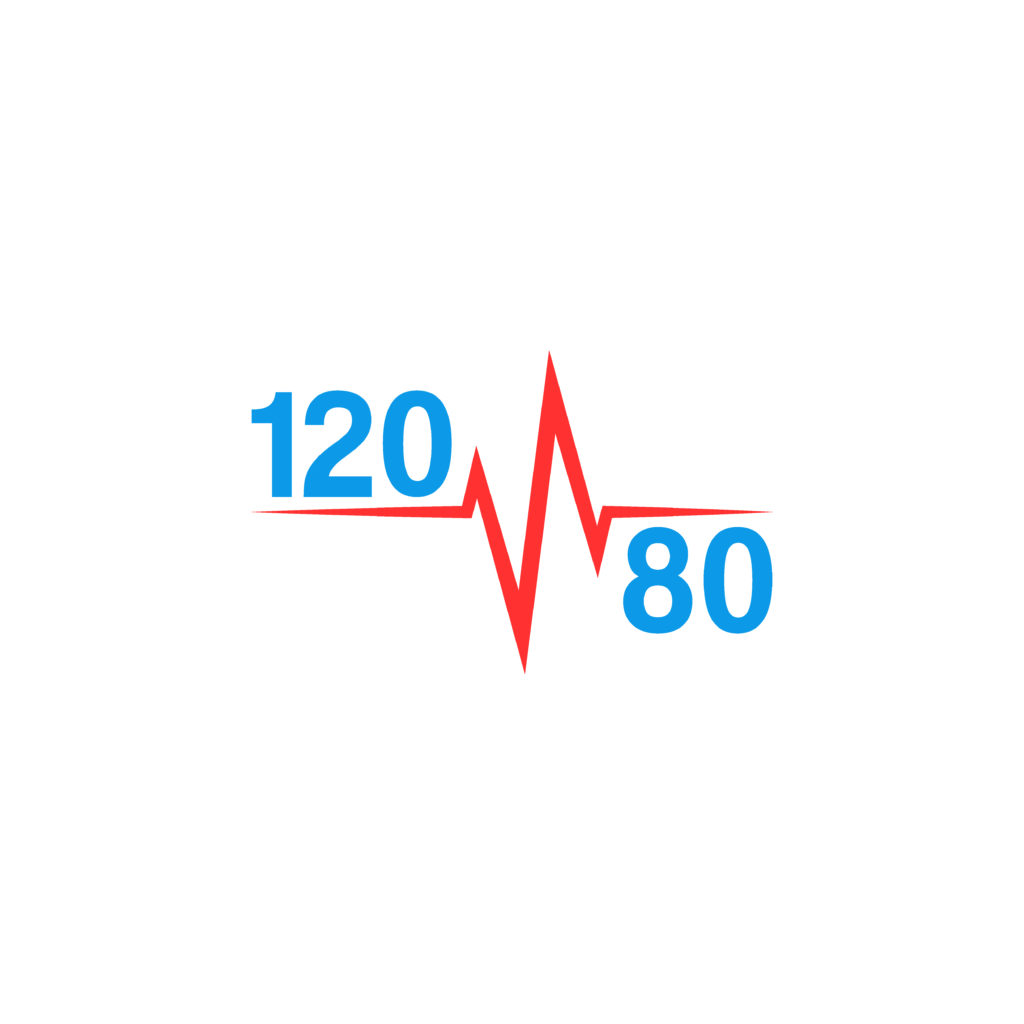
The ideal blood pressure should be around 120/80mmHg. Your blood pressure is measured in ‘millimetres of mercury’ (mmHg) and the result consists of two readings. One number at the top and one at the bottom. The top number called systolic blood pressure is the highest level your blood pressure reaches and occurs as blood is pumped out of the heart into your arteries while the bottom number called diastolic blood pressure is the lowest level your blood pressure reaches and occurs as your heart rests between heart beats.
A sustained blood pressure of 140/90mmHg or above over several weeks may indicate you probably have high blood pressure. You may also have hypertension if it just one number that is higher than normal over several weeks. Your blood pressure will be classed based on the readings taken.
Stages of Hypertension
- Normal blood pressure: below 120 / 80 mm Hg.
- Prehypertension: 120-139 / 80-89 mm Hg.
- Stage 1 hypertension: 140-159 / 90-99 mm Hg.
- Stage 2 hypertension: 160 / 100 mm Hg or higher.
- Severe: Systolic blood pressure of 180 mmHg or higher or diastolic blood pressure is 110 mmHg or higher.
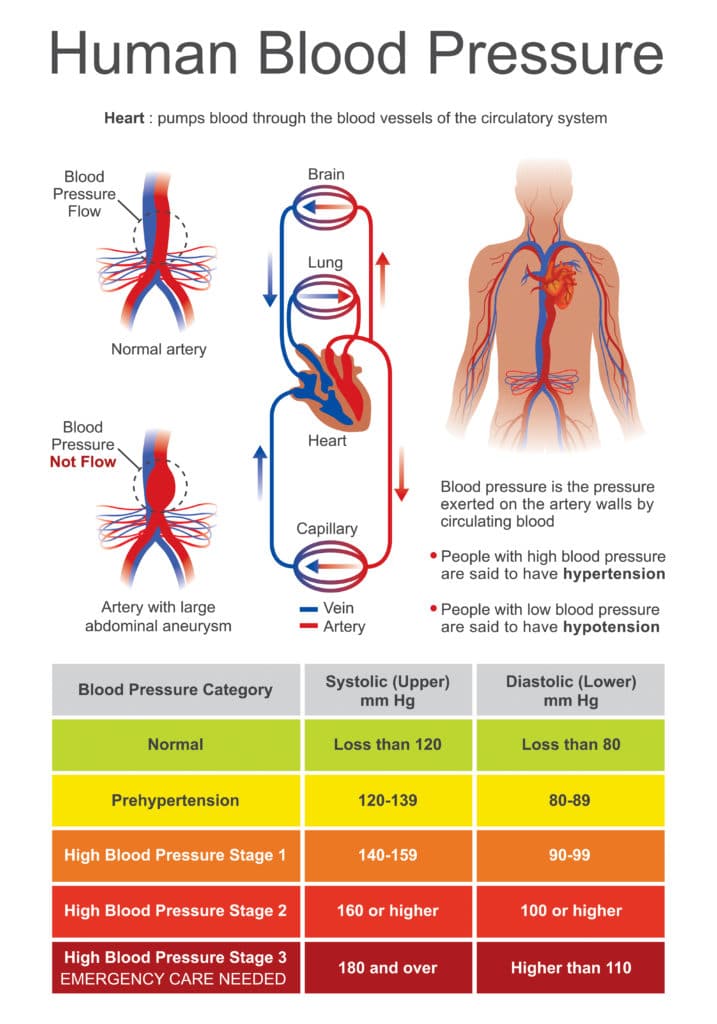
Your doctor may check you several times after a high blood pressure reading to see if it’s a one-off or your regular blood pressure. Your doctor may also want to take more readings over a longer period to work out your average level and make a definite diagnosis. This can be done either by ambulatory blood pressure monitoring (ABPM) or home blood pressure monitoring (HBPM). Ambulatory blood pressure monitoring (ABPM) is done by wearing a device that measures your blood pressure on your arm for 24 hours. This device measures your blood pressure roughly every 20 minutes during the day and every hour at night.
Some people can have ‘white coat hypertension’. This means that the presence of a doctor in his white coat makes them anxious and raises their BP only at that point when they are with the doctor. For such people, it may be more accurate to monitor their blood pressure at home. In home blood pressure monitoring (HBPM), you will be asked to measure and record your blood pressure at morning and evening for up to seven days.
Your doctor can ask you other question to help make a diagnosis. They may ask you about your family’s medical history, the medicines you are currently taking, diet, exercise, alcohol intake, weight and your general health.
If your blood pressure is high, your doctor will perform further tests to find out if it has caused you any harm especially to your heart or kidneys. They may carry out :
- an eye test to check for any swelling or bleeding behind the eyes
- an electrocardiogram (ECG) to check how your heart is working
- a blood test to check your blood sugar, electrolytes, estimated glomerular filtration rate (EGFR), creatinine, cholesterol and HDL cholesterol
- a urine test to check for protein in your urine which could be a sign of kidney damage
Causes of High blood pressure
There are two types of high blood pressure: Primary or secondary high blood pressure.
Primary or essential Hypertension
This is when you have no identifiable reason why you have high blood pressure. While the cause of primary high blood pressure is unknown, evidence suggests that there are factors known to increase your risk of primary hypertension. These risk factors are classified into modifiable and non-modifiable risk factors. Non modifiable risk factors are those risks you can’t change while modifiable risk factors are those risk factors that you can change.
Non modifiable risk factors include:
- having a relative with hypertension as this condition seems to run in families,
- age – the risk of developing high blood pressure increases as you get older because your blood vessels become more rigid as you age, preventing them from opening as effectively and increases the resistance of the arterial vessels to blood flow.
- being of Afro-Caribbean or South Asian origin.
- having some health conditions like diabetes and kidney disease has been linked to an increased risk of developing primary high blood pressure.
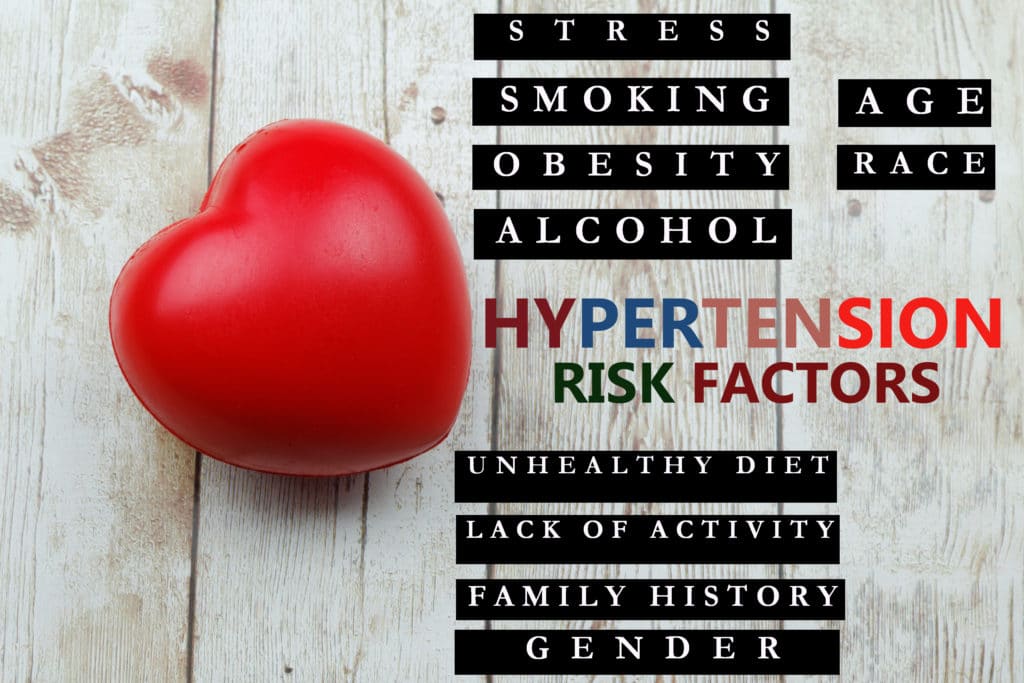
Modifiable risk factors include:
- excessive alcohol consumption
- not doing enough physical activity
- a generally unhealthy diet
- being overweight or obese
- high amount of salt in your diet
- smoking
- stress
Secondary Hypertension
This is when high blood pressure is known or caused by an underlying factor. About 5 to 10% of people diagnosed with high blood pressure are diagnosed with secondary high blood pressure.
The underlying factors include:
- kidney infection or disease
- narrowing of certain arteries
- hormonal conditions, such as an underactive or overactive thyroid, Cushing’s syndrome (a condition where your body produces an excess of steroid hormones) Conn’s syndrome or a tumour of the adrenal gland
- conditions that affect the body’s tissue, such as lupus (a condition where the immune system attacks healthy tissue)
- medication, such as the oral contraceptive pill, decongestant cough and cold remedies, steroids such as prednisolone and dexamethasone and nonsteroidal anti-inflammatory drugs (NSAIDs) such as ibuprofen
- obstructive sleep apnoea (frequent pauses in breathing when you sleep)
- excessive alcohol consumption
- recreational drugs, such as cocaine
- herbal remedies, such as herbal supplements
Home monitoring
Your doctor suggests you regularly measure your blood pressure by using a home blood pressure monitor. This is to check that the prescribed medicines or lifestyle changes are helping to bring your blood pressure down. This also helps you and your doctor make decisions about your treatment. It can help decide if you need to increase or reduce the dose of your medicine or even if you need to try another medication.
You may also want to measure your blood pressure yourself at home for your own records. This can help you and your doctor get a more complete picture of what your blood pressure is like as you go about your daily life and from day to day. Some patients feel that measuring their blood pressure at home using a home blood pressure monitor makes them be in control of their condition. Seeing how well your medicines and lifestyle changes are working for you can also encourage you to continue with whatever medication or lifestyle changes that helped.
It is important that you know how to use the machine and what information to write down and share with your doctor.
Follow the discussion on hypertension here
Meet and support others here
